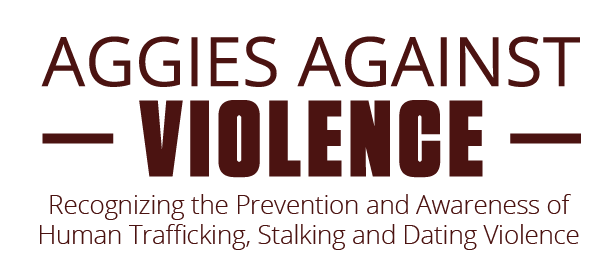PREVENTION & AWARENESS MONTHS

Relationship Violence Prevention & Awareness Month
October is observed as National Domestic Violence Awareness Month. This initiative was started in 1981 by the National Coalition Against Domestic Violence as a Day of Unity to connect battered women’s advocates across the United States.
Now in its 43rd year, individuals and communities across our nation join together during this month in a strategic effort to raise awareness of domestic violence, and all forms of relationship violence, as a public health issue and educate others on how they can take action to advocate for change, intervene to stop abuse from occurring, and support those who are impacted.
Relationship violence is a more expansive term, and includes abuse that happens between, for example, friends, roommates, coworkers, and acquaintances. It may also include abuse between married, estranged, dating, or intimate partners.
Relationship Violence is a pattern of behaviors used by one partner to maintain power and control over another person. Anyone may experience relationship violence at various times in their life course – as a child, adolescent, young adult, adult, or as an elder. It includes any act of threatened, attempted, or completed violence.
Relationship violence includes acts of sexual assault, stalking, physical abuse, economic or emotional abuse, including behaviors that are intended to intimidate, manipulate, humiliate, or isolate someone. It may also include harmful acts or threats against family members, friends, pets, or property.
When we use the term Dating Violence, we are referring to a crime that specifically occurs between individuals within a social or romantic relationship, who are defining themselves as partners.
When we use the term Intimate Partner Violence, we are referring to dating, domestic, or relationship violence where intimacy or sexuality is present.

Aggies Against Violence
January and February are national months of recognition for the following types of power-based personal violence, which adversely impact individuals, groups, and communities across our nation and world:
National Stalking Prevention & Awareness Month
In January, we commemorate the 20th annual National Stalking Prevention & Awareness Month. This initiative serves as a call to action, urging us to recognize and respond to the serious crime of stalking.
National Slavery and Human Trafficking Prevention Month
In January, we observe the 14th annual National Slavery and Human Trafficking Prevention Month. This crucial initiative aims to raise awareness about the various forms of human trafficking and educate communities on identifying and responding to this crime.
Teen Dating Violence Awareness Month
In February, we recognize Teen Dating Violence Awareness Month. Since 2018, Student Life has been actively involved in programming related to this important month, extending the conversation beyond teen relationships to include adult dynamics such as intimate partner violence, dating violence, and domestic violence.
Learn more about stalking, human trafficking, and teen dating violence

Sexual Assault Prevention & Awareness Month
April is Sexual Assault Awareness Month (SAAM), a campaign that aims to raise public awareness about sexual assault and educate communities and individuals on how to prevent sexual violence in the United States. The initiative was officially declared in 2001 by the National Sexual Violence Resource Center (NSVRC). During SAAM, advocates, survivors, loved ones, and communities come together to openly discuss sexual violence, support survivors, increase awareness, and identify prevention strategies and resources. This year marks the 23rd anniversary of SAAM, celebrating grassroots activism that has led to systemic change in recognizing, preventing, and responding to sexual violence. It’s a crucial time to advance education and social change related to this public health issue.
KNOW YOUR RESOURCES
Learn more about the resources available through Student Life, on-campus, and in the community.
KNOW YOUR RESOURCES
Learn more about the resources available through Student Life, on-campus, and in the community.
